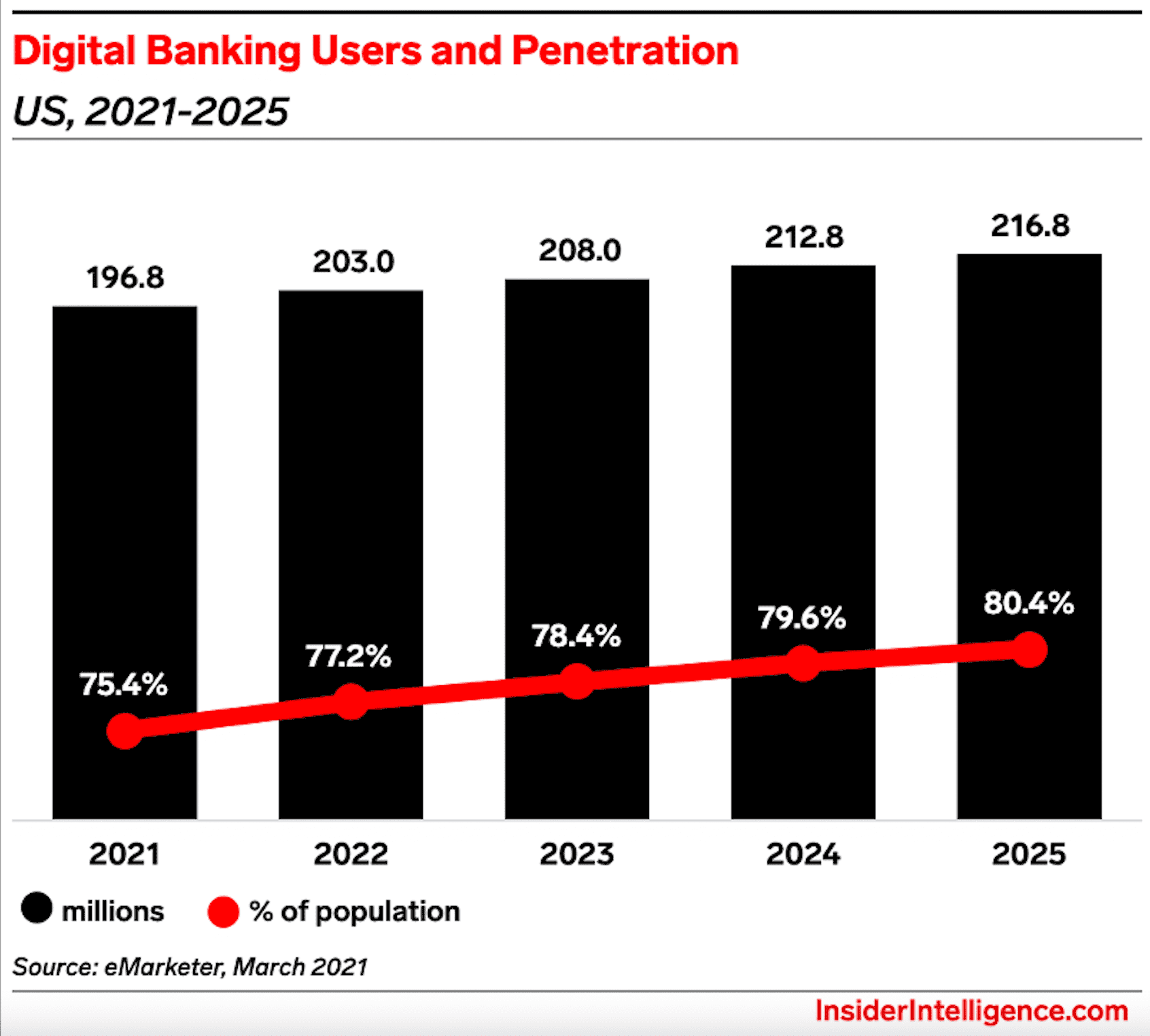In an era defined by innovation and rapid digital advancements, the finance sector is no exception when it comes to harnessing the power of technology. This article presents an insightful exploration of the various facets of digital transformation within the financial industry.
Stay at the forefront of groundbreaking developments and learn how to capitalize on this technological revolution by deploying the latest fintech trends.
Why Finance Digitalization Matters
The world becomes more interconnected, and business operations become more complex. Technological advancements have brought about new opportunities for businesses to streamline their financial processes, increase efficiency, and reduce costs. Finance digitalization means utilizing technology to enable the above-mentioned and improve service delivery and bank-to-customer interactions.

Businesses can save time and money by automating processes and reducing the need for so much manual labor. This frees up resources for other activities and allows businesses to focus on core activities that add value to their bottom line. Furthermore, developing a finance app can allow businesses to complete tasks more quickly and accurately, reducing the likelihood of errors.
Another benefit of finance digitalization is accessing data in real time. With digital platforms and tools, financial information can be accessed instantly, providing businesses with the most up-to-date information on their finances. This is particularly useful for decision-making purposes, as it allows businesses to make informed decisions based on current information.
Digitalization also enables businesses to reduce costs. By automating tasks, businesses can reduce the need for human labor, saving on salaries, benefits, and training costs. Moreover, with less paperwork and storage requirements, businesses can also save money on physical storage space.
Digital Transformation in Finance and Accounting
Digital transformation is no longer an optional luxury; it has become a necessity for financial institutions to survive in today's fast-paced, ever-changing business environment. Let’s discuss the most critical drivers of finance digital transformation.
Cloud-Native Technologies at the Core
Cloud-native technology is the beating heart of digital transformation in the banking industry. It enables banks to respond to clients' ever-evolving needs swiftly, offer innovative solutions, and compete effectively in a highly dynamic market. With cloud-native technology, banks can achieve unprecedented levels of agility, resilience, and scalability, unlocking new business opportunities and improving customer experiences.
One of the most significant advantages of cloud-native technology is its ability to reduce costs for banks. With cloud-native technology, banks can avoid costly on-premise infrastructure, reduce hardware requirements, and operate with a pay-as-you-go model, which means they only pay for the resources they use. Additionally, cloud-native technology reduces the need for large teams of engineers and IT personnel, freeing up resources for other critical business areas.
Another critical benefit of cloud-native technology is its ability to enhance security. With the increased cyber-attack threat, banks need to protect their data and infrastructure from external threats. Cloud-native technology provides banks with advanced security controls that include encryption, secure credential management, SSL management, and intrusion detection.
Neobanks Take Front Stage
Neobanks are the prime example of how digital transformation has revolutionized the financial services industry. With the rise of consumer demand for cheaper and simpler banking options, digital-only banks have emerged as a viable alternative to traditional banks.
Their complete lack of physical branches sets neobanks apart from traditional banks. By completely digitizing their operations, neobanks can offer their customers a seamless banking experience that can be accessed from anywhere in the world using just a computer, tablet, or smartphone.
But it's not just the customers who benefit from neobanks. As digital-only banks, neobanks drastically reduce the costs associated with traditional banking systems. Without physical branches, neobanks have lower overhead costs, which they pass on to their customers in the form of lower fees and better interest rates. By forgoing the physical branch network, neobanks have also significantly reduced their carbon footprint, contributing to a more sustainable future.
API-Based Banking is Expanding
API-based banking enables third-party companies to access a bank's common tools, services, and valuable assets, like financial information, customer accounts, and more, through a secure interface. This means that banks can easily share their data with other companies, facilitating faster, more convenient, and cost-effective connections.
Two key trends that have emerged as a result of API-based banking are open banking and banking-as-a-service (BAAS). Open banking allows banks to share access and control of their clients' banking transactions and financial data with other companies through APIs. This has revolutionized how businesses operate, bringing improved customer service, client engagement, and new revenue streams.
BaaS provides end-to-end banking infrastructure through APIs. With BaaS, financial institutions and fintech startups can build their financial solutions on top of the providers' regulated infrastructure, making it possible to offer banking operations and services without having to create their own bank.
How can we help you achieve your digital goals?
Get in touchPayment-Related Innovations Boost
Innovation in the world of finance has primarily centered around payments, leading to cashless payment systems that are becoming faster, more secure, and more embedded in our daily lives. One of the major trends in this shift is the evolution of the front- and back-end parts of payment systems, encompassing various methods such as contactless payments, digital wallets, P2P payments, and instant payments. This trend has revolutionized the payment ecosystem, leading to significant structural changes such as the rise of "buy now, pay later" (BNPL) offerings.
The ability to buy products or services now and pay for them later, frequently without interest, is provided by BNPL, a new kind of short-term financing. The payment environment has changed relatively immediately as a result of this service, forcing banks and payment providers to catch up. In addition to banks and debit issuers, credit card providers and personal loan providers have also felt the impact of BNPL.
Continuous Accounting Rises Radically
Continuous accounting is a modern approach to accounting that emphasizes the use of digital technologies to optimize accounting processes, improve data accuracy, and enhance financial reporting efficiency. It has become the norm in finance departments worldwide, as it represents a key component in the digital transformation of finance.
This transformation is driven by the need for finance departments to operate at a higher level of agility, responsiveness, and efficiency. It requires leveraging cutting-edge technology to automate financial tasks, accelerate financial close cycles, and provide real-time insights into financial performance.
Through the adoption of continuous accounting practices, finance departments can improve the consistency and accuracy of their financial statements throughout the year, not just at the period-end close. This automated approach enables accounting teams to shift their focus towards analysis, interpretation, and data-driven decision-making, creating more value for the business as a whole.
By embedding technology into the accounting process, continuous accounting ensures that finance teams are always up-to-date with financial data. It changes the nature of finance from being backward-looking to forward-looking, allowing decision-makers to respond quickly to changes in the business landscape.
Final Word
Digital transformation has irrevocably changed the landscape of the finance sector. Financial institutions have reaped significant benefits from implementing advanced technologies like artificial intelligence, blockchain, and data analytics to improve efficiency and deliver better customer experiences. These innovations hold immense potential for driving sustainable growth and competitive advantage in the finance industry, ensuring its continued success in a digitally-driven future.
Looking to streamline your financial operations and maximize your ROI? Look no further than Clover Dynamics! With our cutting-edge fintech software development services, we can help you revolutionize the way you manage your finances, from online banking to investment management to payment processing. Our expert developers are always at the forefront of the latest technological advancements, meaning you can trust us to deliver adaptable, forward-thinking solutions that meet your unique requirements.







